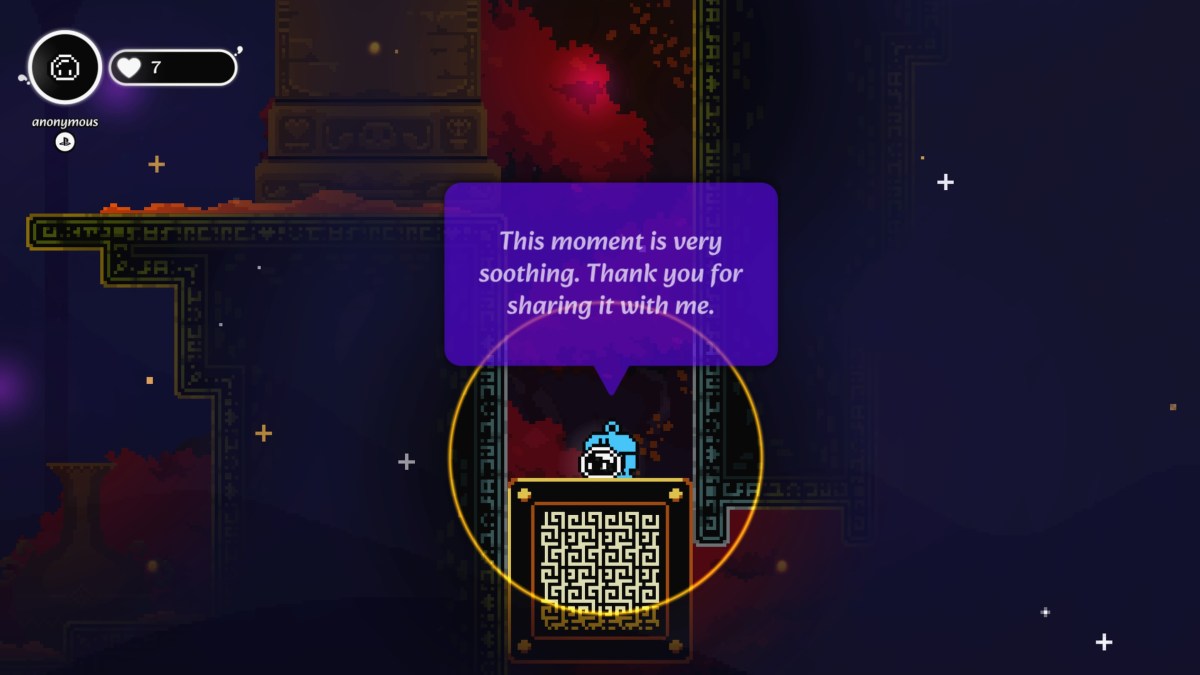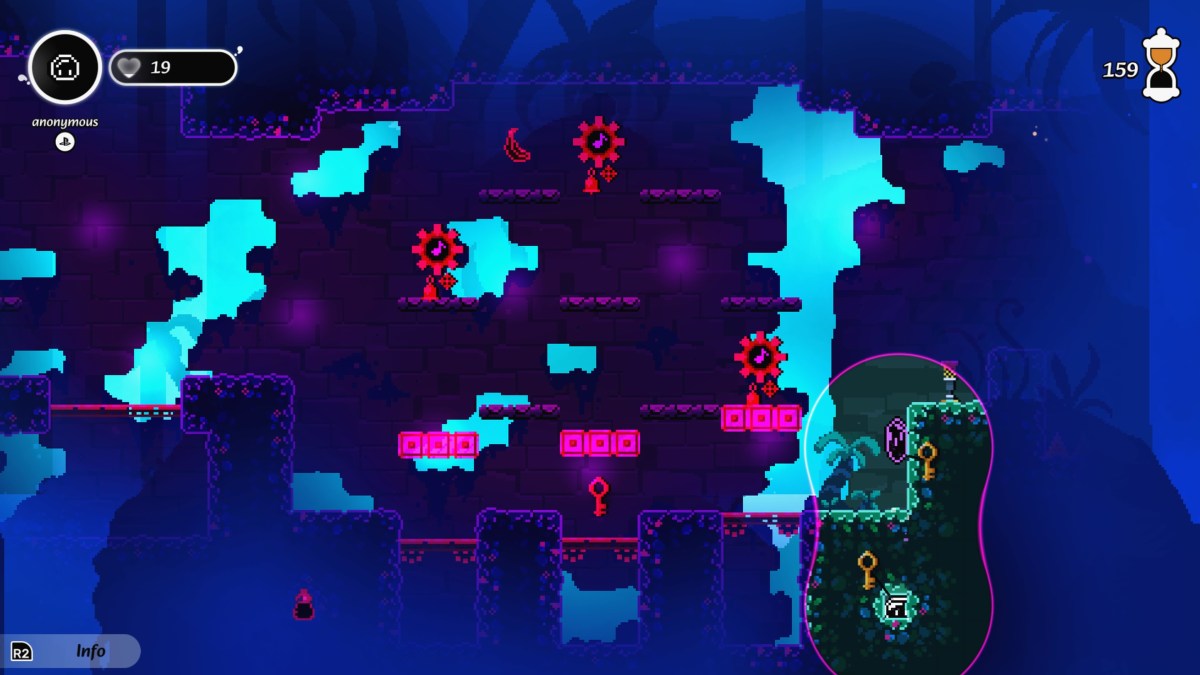KarmaZoo feels like it asks how people respond when they go through a Journey like experience where you’re randomly tasked to explore with others, but with more strict time limits, hazardous perils, and dinosaurs. It relies heavily on other people and the experience, but that in turn means it is only at its best when everything comes together in the right way.
First of all, I did have a chance to play KarmaZoo ahead of launch. However, it went so poorly that it helped set the stage for how situational the game is. If you’re alone, there’s really nothing you can do besides spend hearts you’ve accrued. You need to have at least one other person on hand for either the local competitive Totem mode or for the online cooperative Loop.

Though a single player also isn’t ideal as well. KarmaZoo is supposed to adapt to player size. However, some of the stages I encountered when playing with one other person ended up being unreasonable due to things like the time limit and both of us being stuck as the Slime, the most basic and uninteresting character type. If there wasn’t an issue with separating to trigger switches while dealing with the Halo that would keep us alive, certain platforming sections that would probably have been easier with different characters ate into our valuable time.
Post-launch, KarmaZoo’s experience is better, but again heavily reliant on your resources. Everyone starts this platformer as a slime. You can sing, which is a trigger for certain switches, double jump, leave behind a tombstone when you die, cling to walls, and send people hearts as a “thank you” for their actions in levels. (Said hearts act as a currency for unlocking.) However, other roles have additional abilities, and unlocking them may mean they’ll be more helpful to yourself and others. For example, a plant person could grow into a platform, raptors run fast, or a candle could light torches to offer more visibility.

Each run in the Loop begins with a brief fruit catching opportunity before heading into the stage. Getting certain numbers of fruit here or in stages means the group playing can vote on a perk for the following level. When you head into a stage, you have a limited amount of time (300 seconds) to reach the exit, with four stages (acts) for each one. You want to keep close to other players, because that generates a Halo that allows you to revive if you die. (If you die when alone, you become a ghost that can offer emoji directional cues toward the gate.) You essentially platform through areas, occasionally dying on spikes to leave tombstones, singing at switches to move platforms, conducting electricity, standing on switches to open pathways, and collecting keys for doors. I found the main challenges tended to come from properly jumping to the correct places, especially when there are a lot of spikes or crumbling platforms.
Because this is a game that can rely so heavily on people all going the correct direction, hitting the right switches, and reacting in time with other players so you make proper progress safely and swiftly, it means the people you’re playing with have the greatest effect on the experience. If you are with people who aren’t making good choices or cooperating, it isn’t much fun! It’s frustrating! Also, I found the ideal number of players tends to be around six. That means you can pair up, to ensure you have Halos, or split into two groups of three. Any fewer and it’s far too easy for everyone to get distracted, die, and then fail.
As for the Totem mode, I felt it was a bit bland. It’s fine, but many of the minigames can involve platforming to reach a point first or collect fruits before someone else. It isn’t as universally fun or accessible as, say, the minigames you’d find in a Mario Party title. It also doesn’t feel like it is as much of a draw as the main Loop. I had the impression it was more of an optional “we had room for it, so here it is” inclusion.
KarmaZoo has a noble goal, but the situational nature of things means the stars essentially need to align for things to work perfectly. You need to either get a good group of friends who all own the game together or hope your random session is filled with people who both are serious about working together and unlocked helpful characters. It’s too easy for things to not be exactly ideal, and I’d say about two thirds of all my gameplay sessions were fine as a result.
KarmaZoo is available on the PS5, Switch, Xbox Series X, and PC.
Share the love and die trying! KarmaZoo is a joyful, altruistic, cooperative platformer where up to 10 random players help each other with the unique abilities of 50 different characters - all for the sake of good Karma. PS5 version reviewed.
In the right situations, KarmaZoo can be fun, but it relies heavily on helpful characters and other people.
- I highly recommend getting the hedgehog, as it can help the team by creating sticky areas to reach areas.
- The frog is also handy if you’re not great at platforming, because it can triple jump.
- The plant is super handy in a group, since you can make a platform for others.
- There is crossplay, so that should help with finding sessions.


Published: Nov 18, 2023 4:00 PM UTC